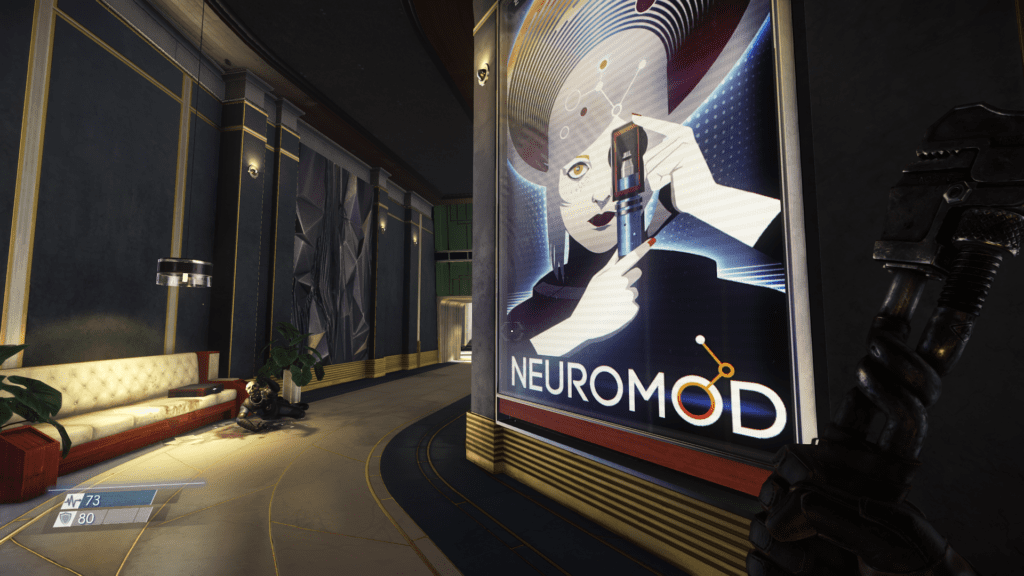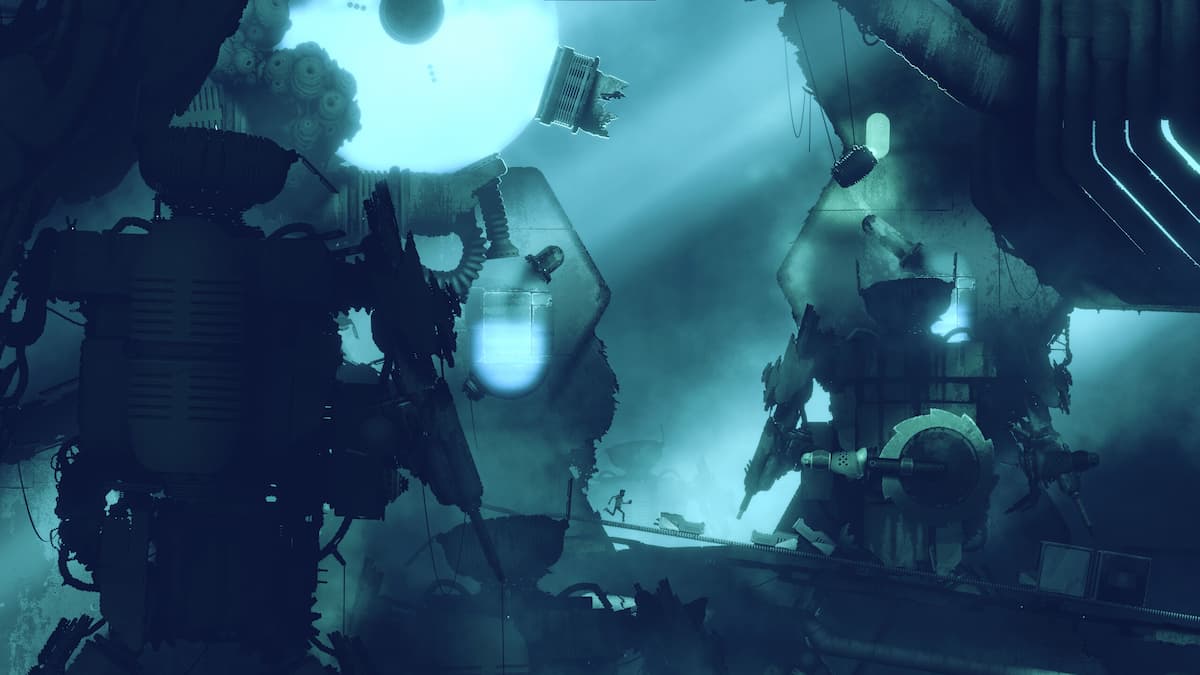Yes, Prey’s performance on PC is very good. That should immediately answer the most pressing question people will have about this release. After Dishonored 2 (and the lack of a PC Prey demo), there was a whole lot of understandable skepticism about Arkane’s technical abilities.
A big difference between Dishonored 2 and Prey, though, is the engine the game’s are running on. For their Dishonored sequel, Arkane opted to convert a version of id Tech 5 into the ‘Void Engine’. Going back as far as Rage (2011), id Tech 5 has always had a bumpy ride on PC. Prey uses CryEngine (either CryEngine 3 or CryEngine 5, sources seem to differ) which immediately feels like a much better choice.
Before we get into some menus, numbers, and a couple of rather annoying UI omissions, here’s the PC I’m testing this on: i5-6600 / 16GB DDR4 RAM / 4GB 380X (newest 17.5.1 drivers) / Windows 10. Unless otherwise stated, any FPS numbers are at 1080p (since that’s what my monitor tops out at).
Right. Menus and options.
Resolution stuff first. Prey supports multiple aspect ratios (16:9, 16:10, 4:3 are all in there), and, though I have no way of checking this directly, ultra-widescreen (21:9) is confirmed by enough secondary sources that I’m satisfied it’s also present. 4K support is in too. I only have a 1080p monitor, but was able to test 4K through AMD’s ‘virtual super resolution’ function (downsampling).
You can run the game in Fullscreen, Borderless Fullscreen, or in Windowed mode. V-Sync is there if you want it, as tends to be the case. Probably worth mentioning at this point that Prey tops out at 144fps. Technically a cap I suppose, but unrestricted by any practical measure. The preset graphics settings on this menu offer Low, Medium, High, and Very High.
Here are your separate graphic options. Not a huge amount, admittedly, but a little bit to play around with if you need to scale the game to your PC. The top three options have the same Low, Medium, High, Very High range. AF runs the usual path from ‘Off’ to 16x in increments of 2. Your AA options are Off, FXAA, SMAA x1, SMAA 1TX, and SMAA 2TX.
The pair of Screen Space options can be set to Off, Half Resolution, and Full Resolution. I’m really not too familiar with the specific differences between Screen Space Directional Occlusion (SSDO) and the more regularly seen Screen Space Ambient Occlusion (SSAO). I think it all falls under “lighting effects”.
Update 6 May: It looks like SSDO and SSR are not always ‘sticking’ as options, so even when it says you’re using them you may not be seeing the effects in-game. To make sure you really are using SSDO/SSR go to the options immediately after loading up, turn them Off (and Apply), then turn them on again (to either Half/Full) and then Apply. That should get it to stick. If you have the .cfg file set to ‘read only’ due to FOV changes then this may complicate matters. I turned ‘read only’ off, and Prey seems to remember the new FOV between sessions so that may not actually be necessary.
Some of the testing I did here was evidently without SSDO/SSR at their fullest – I have now found a couple of demanding spots where the game will dip below 60fps (mid-50s) at max on my machine. Keep that in mind when reading on. It doesn’t radically alter my feelings about the PC version (it still runs very well), except to say that people with older GPUs will probably have to forego some of these lighting effects. Here are a couple of new comparison shots with SSDO/SSR definitely on full vs off.


Certainly, lighting, shadows, and AA are the clearest differences when comparing Prey on its Lowest and Very Highest settings. Let’s do that now (click for larger images).




As noted at the very start of this piece, performance on my PC was very good. This is just a sample size of one of course, but I’ve got a machine that basically sits a little below the recommended specs (GPU-wise, especially), so it should be fairly representative.
Despite being shy of the preferred GPU types, I can run Prey on Very High and get an FPS range of 70-85. I’m only a couple of hours in, so I suppose it’s possible that some gigantic open areas might show up and put more strain on the system. But since it can keep 70-odd during fights with multiple enemies in a large foyer space, I’m pretty confident that performance will hold up. There’s no discernible stuttering (I saw a couple, probably due to areas loading), and as far as I can tell absolutely none of the terrible frame pacing problems found in Dishonored 2.
With everything set to Low (or Off, depending on the option), the FPS count was more like 90-120. For a laugh, I also tried Very High at 4K. To my complete lack of surprise, that sank me into the mid-20s. Still, the fact that Prey remains even vaguely playable (well, not a slideshow) at 4K and max settings on a 380X is pretty compelling proof that performance is not an issue here. (Update: As per the SSDO/SSR update above, this 4K test may well have been performed with those additional options unwittingly disabled, so not actually ‘max’.)
It’s difficult to say just how far the game will scale to much lower hardware. The Minimum suggested GPUs (GTX 660 2GB, 7850 2GB) may indicate a broad limit.
Let’s move on to some aspects which, while not ruinous, are not so great. The pair of menus above are just about the extent of your HUD configuration options. You can switch off some button prompts (the larger Press F to Do Thing that pops up on things; Prey retains smaller key prompts at the side of the screen no matter what), plus hit damage numbers, and the in-game objective menu will allow you to individually turn off quest markers, but that’s about the extent of things.
Coming after the incredible HUD flexibility of Dishonored 2, that’s a bit of a let down. No option to fade out (or remove) health/armour indicators, no global toggle for objective markers. There’s also no way to turn off Motion Blur at present, though it’s not as intrusive in Prey as some applications I’ve seen.
Fans of not getting motion sick may be wondering at this point if they’ve missed an FOV slider. Sadly, you have not. There is said to be an FOV option on the way in a future update, but for now you can’t change it in-game.
You can, however, root around in a .cfg file (C:\Users\<username>\Saved Games\Arkane Studios\Prey game.cfg) and alter the default (a decent-ish 85 at 1080p) to something more desirable. Then set that file to Read Only so it’s not overwritten. Doing this won’t change the size of the weapon you’re holding, but it does help with the overall world FOV. Here’s a comparison between the default 85 and 100. It can reportedly go to 120, but may get a bit unstable at higher values.


Before we get on to the keyboard and mouse controls, I have two more pretty minor stylistic complains. The Chromatic Aberration effect on the game’s typeface in some of the menus is absolutely bonkers, and I’m not a fan of the dark vignetting that appears at the sides of the screens while crouching. As I said, minor stuff.
What I do appreciate is Prey’s decision to display readable notes and books as plain text on static backgrounds. There’s none of that bizarre tilting which happened with documents in Dishonored 2 and made me kind of ill.
Keyboard control rebinding is in, and is pretty self-explanatory. There’s a mouse axis toggle in case you want to control Prey’s protagonist like an aeroplane (hey, whatever, it’s your kink), and a sensitivity slider which I barely touched because the default setting quite accurately matched my aimless flailing around.
There’s no noticeable mouse acceleration, but mouse sensitivity does drop a whole lot (maybe as much as half) when sprinting. Not quite sure why. It’ll potentially make aiming at stuff while running a bit odd, though hardly insurmountable.
I have one other mouse-related UI quibble. The console-like preferences wheel that you can pop up allows you to assign hotkeys 0-9 to weapons (great!) but you can’t put things like medkits on those keys. The shortcut for using a medkit is to bring up the wheel and press E, which isn’t much quicker than bringing up the inventory and using them from there. Again, minor thing, but when performance is so consistent this is what I have left to complain about.

Aside from the absent FOV slider (Arkane have been quick in communicating why that is, and that one is on the way, so a partial pass there), and a bit of a lack of HUD customisation, Prey’s PC version is a welcome surprise. More specialised options like 4K and 21:9 support are there, keyboard and mouse controls are customisable and (baring that odd dip in sensitivity when sprinting) much better for aiming and menu navigation than the gamepad alternative. The general UI is not completely geared towards keyboard and mouse (right-click backs you out of most things, but not everything, for example), but those quirks are pretty minor.
Overall performance is terrific, and could not be more different from Dishonored 2 (which struggled to maintain 30fps at lowered settings on this exact same PC). Prey is arguably doing lighter rendering work depicting its Art Deco corridors and foyers than Dishonored 2 was with its distant rooftops, but the ultimate result here is that this game runs at a smooth 70-80fps on max settings at 1080p. Whether this improvement is down to the different engine, smoother development process, or a more serious commitment to the PC version from Arkane this time around, I’m not sure (probably a little of each). But it all means Prey should be remembered as one of the better technical PC releases of the year rather than one of the worst.



















Published: May 5, 2017 5:16 AM UTC